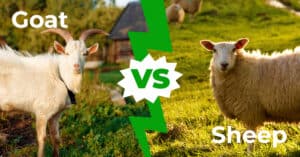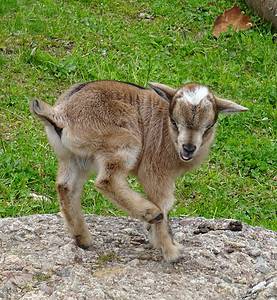Key Points:
- Butchers classify goat meat into kid meat and adult meat based on the goat’s age when processed.
- Goat meat is low in calories and saturated fat but high in protein and vitamins. As such, many people view it as a healthier option than beef.
- Goat meat is a great source of potassium and vitamin B12.
- Many different global cuisines commonly eat goat meat, including African, Asian, Caribbean, and Middle Eastern cuisines.
Goat meat, or mutton, is one of the most commonly eaten meats in the world. In addition to its great taste, goat meat also contains numerous important vitamins and nutrients. If you currently don’t consume goat meat, check out this article to learn everything you need to know about mutton.
1. Origin of the Word Mutton
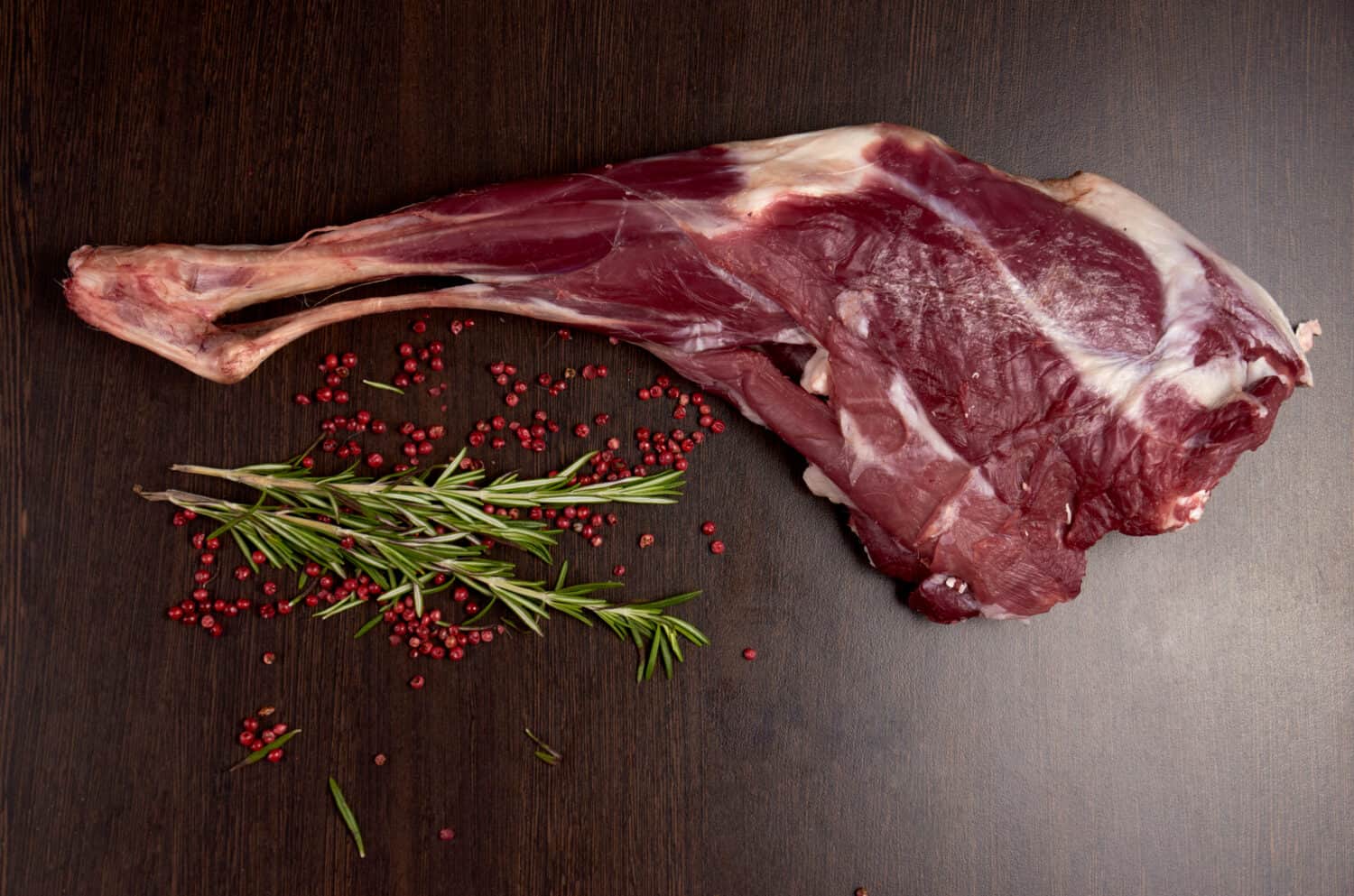
The word mutton originates from the French word “mouton” which means sheep.
©Sheylest/Shutterstock.com
Most people today refer to goat meat simply as goat. That said, the term mutton also refers to goat meat, although the term is not as commonly used today.
The word mutton derives from the New French word mouton, meaning “sheep.” In turn, the French word mouton stems from the Latin multo, which in term probably stems from the Gaulish term multon, again meaning “sheep” or “ram.”
Mutton can apply to not only goat or lamb but also the meat of urials or caprines. Additionally, the meaning of the term mutton can change from one region to the next. In some places, the term mutton normally applies to the meat of sheep more than 2 years old.
2. There Are Different Types of Goat Meat
Like beef and veal, goat meat varies depending on the age of the goat. This distinction is most commonly made in culinary circles to classify different types of goat meat.
The term “goat meat” applies to all goats regardless of age. Within certain culinary circles, the word “chevon” is also used for goats between 4 and 14 months of age. The term derives from chevre, meaning “goat,” and mouton, meaning “sheep.” However, this term is not often encountered outside certain culinary spaces.
Meanwhile, the terms “kid meat” or “capretto” (Italian) refer to goats less than 4 months old. In Spanish and Portuguese, the term “caprito” is used specifically for young, milk-fed goats.
Younger goat meat typically appears lighter and is more flavorful than older goat meat. While darker and tougher, older goat meat normally tastes more juicy and flavorful compared to kid meat.
3. Goats and Sheep Are Different
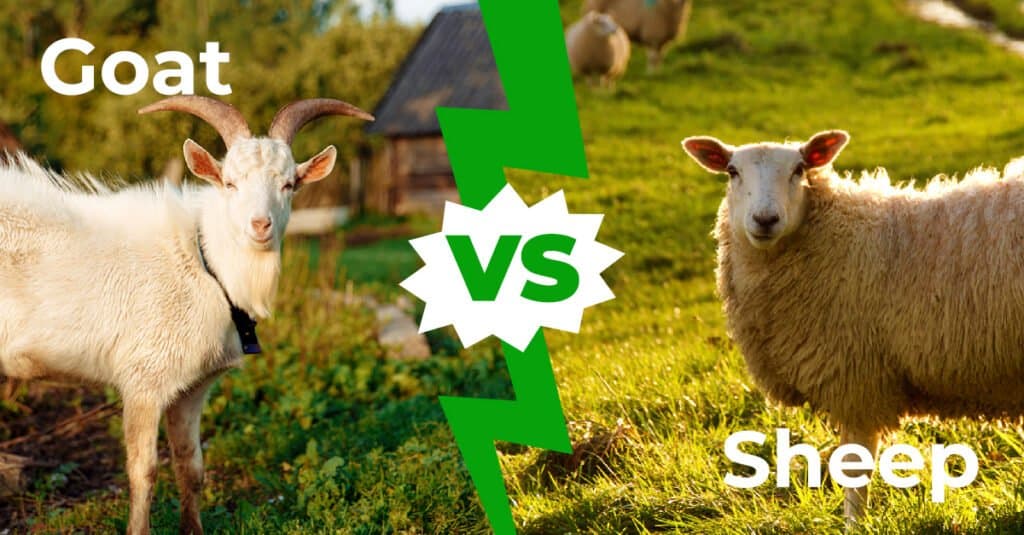
Many people often mix up goats and sheep. While similar, goats and sheep differ in several key areas.
To begin with, sheep and goats belong to different genera. Sheep come from the genus Ovis, while goats come from the genus Capra.
Additionally, the two animals differ in appearance, temperament, and behavior. As for their meat, sheep meat is usually more tender due to its higher fat content. On the other hand, goat meat normally has more protein per calorie consumed than sheep meat.
4. Goats Can Carry Disease
Goats are notoriously hardy animals and possess the ability to survive in a myriad of habitats. That said, even the hardy goat suffers from numerous ailments, diseases, and afflictions. These conditions can weaken or harm goats, which can also affect the quality of their meat.
While parasites most commonly affect younger goats, adult goats can also contract parasites. Common goat parasites include lungworms, gastrointestinal nematodes (roundworms), liver flukes, and coccidia. These parasites can cause poor weight gain, diarrhea, anemia, and other issues.
Other common goat diseases include chronic wasting syndrome, paratuberculosis, and encephalitis. While most diseases that affect goats can’t pass to humans, certain conditions can transmit to humans via oral consumption of contaminated or undercooked goat meat. These include E. coli, leptospirosis, salmonella, sarcocystosis, and toxoplasmosis. Always make sure to handle goat meat properly and cook it fully before consuming it.
5. Goat Meat is Leaner and has Fewer Calories than Beef

Goat is leaner and has fewer calories per serving compared to beef.
©DonnaA Country Photos/Shutterstock.com
Beef is the undisputed king of red meat. However, if you’re looking for a lower-calorie, leaner option, then goat meat may be just what you’ve been looking for.
Pound for pound, goat meat contains fewer calories and less fat than beef. This makes it an ideal alternative if you’re looking for a high-protein red meat while in a calorie deficit.
For example, 3 ounces (226 grams) of cooked goat meat contains approximately 250 calories, of which 5.24 grams comes from fat. Meanwhile, 8 ounces of boneless beef steak will contain, on average, around 450 calories and nearly 26 grams of fat. Some fattier cuts of beef will contain even more calories and fat.
6. Goat Meat is Packed with Nutrients
Not everyone enjoys eating red meat, either for personal taste or health reasons. However, you can’t deny that goat meat is absolutely jam-packed with nutrients that make it an ideal choice for the health-conscious meat eater.
Let’s take a look at the nutritional breakdown of a 3-ounce (85-gram) portion of goat meat. This portion provides the following:
- Calories: 122
- Protein: 23 grams
- Fat: 2.6 grams
- Cholesterol: 64 milligrams
- Calcium: 14 grams
- Iron: 3 grams
- Potassium: 344 milligrams
- Vitamin B12: 1.02 micrograms
- Riboflavin: 52 milligrams
Other trace minerals and vitamins present in goat meat in trace amounts include:
- Choline
- Vitamin B1 (thiamin)
- Vitamin B3 (niacin)
- Vitamin E
- Vitamin K
- Copper
- Manganese
- Phosphorus
- Selenium
- Sodium
- Zinc
7. Goat Meat is a Great Source of Vitamin B12
Goat meat contains numerous important nutrients and vitamins. Along with high-protein and low-fat content, it also serves as one of the best sources of vitamin B12.
Also known as cobalamin, vitamin B12 is a vital vitamin and one of the 8 so-called “B vitamins.” It plays an essential role in maintaining a healthy metabolism and nervous system.
As the most chemically complex vitamin, vitamin B12 can only be acquired from animal products or animal-derived foods. A lack of vitamin B12 can lead to various health conditions, including anemia, joint pain, muscle weakness, brain fog, memory issues, and other problems.
8. Goat Meat is High in Potassium
In addition to containing high levels of vitamin B12, goat meat also contains relatively high dosages of potassium.
Potassium is one of the most common substances in the human body. As such, maintaining appropriate levels of potassium is essential for health and vitality. Some of the functions it serves include nerve conduction and muscle contraction, moving nutrients through cells, filtering waste, and maintaining how much water is in your body.
When most people think of foods high in potassium, they typically think of bananas. A medium-sized banana contains around 422 milligrams of potassium. That said, 3 ounces of goat meat contains around 344 milligrams of potassium, making it a great potassium-rich food alternative.
9. Many Different Cultures Consume Goat Meat
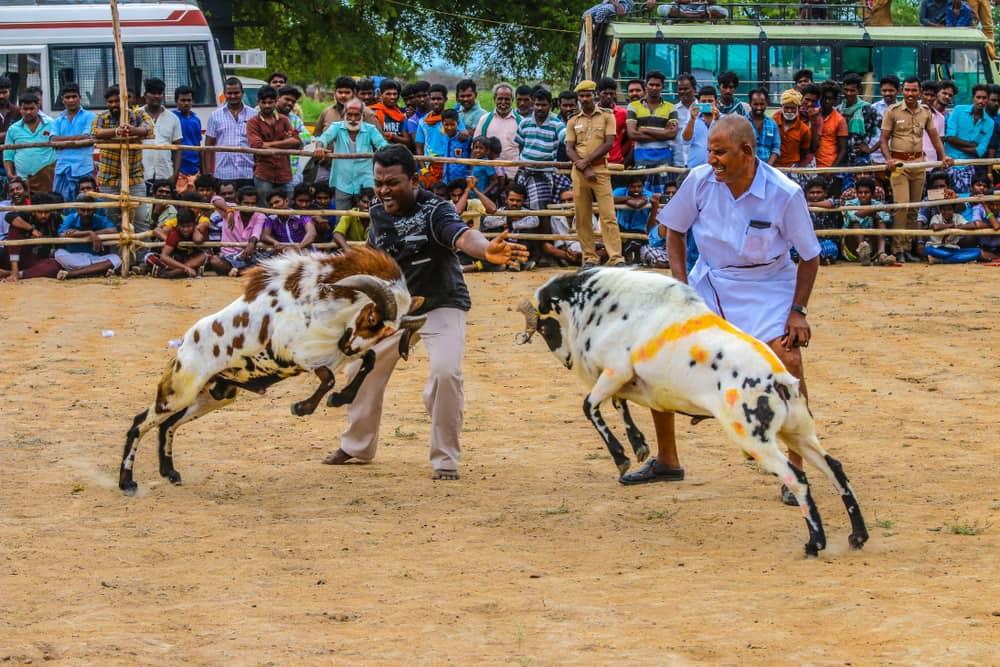
Many cultures commonly consume mutton.
©YAMOMOYA/Shutterstock.com
By far, pork ranks as the most popular food meat in the world, followed by chicken and beef. That said, goat meat is commonly consumed in many countries around the world.
People in Asia, Africa, the Caribbean, and the Middle East commonly feature goat meat in regional cuisines. Some countries that commonly eat goat include Jamaica, Mexico, India, Korea, and Tanzania.
People in the United States, Canada, and northern Europe consume goat meat less often than in the places mentioned above. That said, you can still find goat meat in these areas, particularly at butchers and niche supermarkets.
10. You Can Prepare Goat Meat Numerous Ways

In Jamaica, people often use goat meat in curried stews.
©sockagphoto/Shutterstock.com
Compared to beef, goat possesses a gamey, bold flavor. It also tends to be much tougher than either beef or lamb. As such, many goat recipes call for marinating the meat or cooking it for long periods of time to tenderize the meat and calm down its strong flavor.
In Jamaica, people often use goat meat in curried stews. Jamaica curried goat includes seasonings and herbs like thyme, cumin, turmeric, and coriander, and is often paired with rice and beans.
Meanwhile, in India, you can often find goat meat with biryani. This traditional rice dish contains carmelized onions and goat meat marinated in yogurt with spices like biryani masala and turmeric.
Summary of 10 Things You Should Know About Goat Meat
Here’s a recap of all the information you should know about goat meat:
| Number | Mutton Fact |
|---|---|
| 1 | The word mutton originates from the New French “mouton” |
| 2 | There are different types of goat meat |
| 3 | Goat meat and sheep meat are different |
| 4 | Goat meat can carry diseases that can infect humans, like E. coli and Salmonella |
| 5 | Goat meat is leaner and has fewer calories per serving size than beef |
| 6 | Goat meat is packed with nutrients |
| 7 | Goat meat is a great source of vitamin B12 |
| 8 | Goat meat is high in potassium |
| 9 | Goat is commonly consumed in Africa, the Caribbean, and the Middle East |
| 10 | You can prepare mutton in numerous ways, such as in stews or rice dishes |
The photo featured at the top of this post is © danhusseyphoto/Shutterstock.com
Thank you for reading! Have some feedback for us? Contact the AZ Animals editorial team.





